Trending Now
Review by Steve Goldberg
Trends in Modern Openings, by Rustam Kasimdzhanov, 2014 ChessBase, DVD, 4 hours playing time. $38.95 (ChessCafe Price: $33.27)
In this four-hour opening review DVD, former world champion Rustam Kasimdzhanov examines a variety of commonly encountered openings, beginning with either 1.e4 or 1.d4. No offbeat Orangutans here.
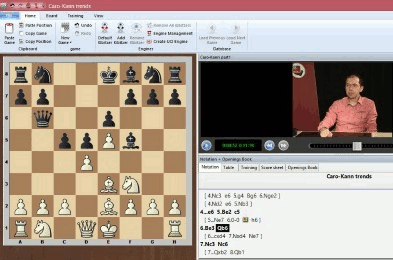
I would suggest that hardly any player will struggle to find something (or many things) of interest here.
The openings that Kasimdzhanov touches upon include:
- Scotch Opening
- Petroff Defense
- Queen’s Gambit Declined – Lasker Variation
- Caro-Kann (3 video segments)
- Classical Slav
- Ruy Lopez with 3…g6
- Ruy Lopez with 6.d3 (2 videos)
- Ruy Lopez – Berlin Defense (4 videos)
- Double fianchetto with Black
- Slav with 3…dxc4
- Ragozin with Aronian’s Nb6 plan
- Queen’s Gambit Declined with 4…Nbd7 (2 videos)
- Najdorf with 6.h3
Kasimdzhanov delves deeply into this opening analysis, often extending 20 moves or more, as well as including important variations along the way. He explains what had been commonly played in the past, and what current theory has to say. Of benefit to non-GMs, he also clearly explains why, to his understanding, the theory has been changing, how a previous move may have been refuted to some extent.
For example, in his Petroff segment, he explains why top-level players may have been a bit frightened away recently from using this defense. After 1.e4 e5 2.Nf3 Nf6 3.Nxe5 d6 4.Nf3 Nxe4, the traditional continuation had been 5.d4 d5, which seems fine for Black. But more recently, 5.Nc3 has been played, leading to a more comfortable game for White.
Caro-Kann players are treated to three video segments here, with all three concentrating on the line 1.e4 c6 2.d4 d5 3.e5 Bf5 4.Nf3 e6 5.Be2 c5 6.Be3 Qb6 7.Nc3. Each of the three video segments examines a different 7th move for Black. Kasimdzhanov, however, does cover a variety of alternative lines along the way.
Even more video segments (seven) are devoted to variations of the Ruy Lopez.
Kasimdzhanov first looks at the variation 1.e4 e5 2.Nf3 Nc6 3.Bb5 g6 played by Carlsen against Nakamura in St. Louis 2014. The next two video presentations examine the positions resulting from 1.e4 e5 2.Nf3 Nc6 3.Bb5 a6 4.Ba4 Nf6 5.0-0 Be7 6.d3.
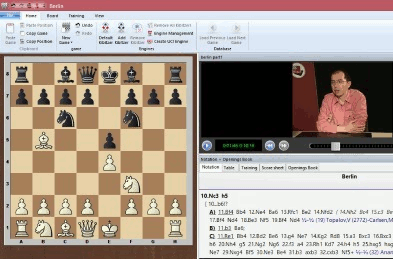
The Berlin Defense in the Ruy Lopez, beginning with 1.e4 e5 2.Nf3 Nc6 3.Bb5 Nf6, of course has been wildly popular since Kramnik employed it in his 2000 world championship match with Kasparov.
Four videos are included on the Berlin, one primarily reviewing 1.e4 e5 2.Nf3 Nc6 3.Bb5 Nf6 4.0-0 Nxe4 5.Re1, and the other three looking at continuations following 1.e4 e5 2.Nf3 Nc6 3.Bb5 Nf6 4.0-0 Nxe4 5.d4 Nd6 6.Bxc6 dxc6 7.dxe5 Nf5 8.Qxd8 Kxd8 9.h3, which Kasimdzhanov considers the primary Berlin position.
Then comes a segment covering a version of the Slav recently favored by Nakamura, despite lackluster results. It begins 1.d4 d5 2.c4 c6 3.Nc3 dxc4 4.e3 b5 5.a4 b4 6.Ne4 Qd5 7.Nd2. Kasimdzhanov remarks that it has caught his attention because Nakamura has played this 3…dxc4 variation at high levels, and “remarkably unsuccessfully.” But Kasimdzhanov remains intrigued by this opening, and reviews some “trendy” moves here.
A couple versions of the Queen’s Gambit Declined follow, and the opening study concludes with two segments covering the Najdorf Sicilian, where Kasimdzhanov examines the line 1.e4 c5 2.Nf3 d6 3.d4 cxd4 4.Nxd4 Nf6 5.Nc3 a6 6.h3.
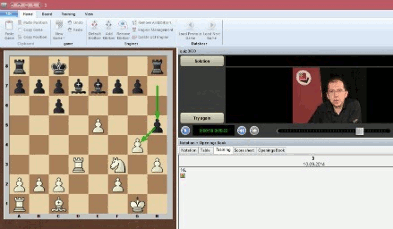
Following 21 opening review segments, there are 8 interactive test positions presented. These are culled from the earlier videos, and ask the viewer to make the best move for each position, testing his or her recall. Incorrect moves are typically followed by a brief video comment from Kasimdzhanov, and the viewer has the opportunity to try again. If the position proves to be too difficult, a “Solution” button may be clicked to provide the correct answer.
I especially enjoyed one of the test positions, taken from the game Caruana-Ponomariov, Dortmund 2014. It actually isn’t from the opening, but is a visually beautiful tactical shot. In this review, I’m presenting the position a pair of half-moves prior to what Kasimdzhanov shows. Here is the position after 38…Bxf7:
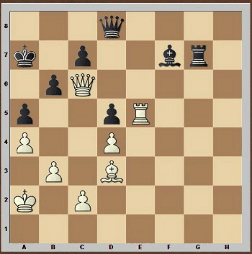
[FEN “3q4/k1p2br1/1pQ5/p2pR3/P2P4/1P1B4/K1P5/8”]
Play continued 39.Re7 Qxe7. This is where Kasimdzhanov presents the position. After this comes the beautiful 40.Ba6, threatening Qb7#. But after 40…Kxa6, White mates with 41.Qa8.
I thoroughly enjoyed Kasimdzhanov’s presentations. He moves at a quick pace, covering quite a bit of ground, even though he examines a wide variety of openings. This coverage, of course, won’t be quite as in-depth as a specific opening book might present. But for analysis suitable for the vast majority of club players, this DVD is an excellent source of current opening information.
The videos often contain only game segments, but the entire game will be found in the Games Database on the DVD, so these can be easily reviewed in their entirety. Of the 63 games included in this database, 52 are from 2013 or 2014, so Kasimdzhanov has truly tried to keep to current trends.
My assessment of this product:
![]()
Order Trends in Modern Openings
by Rustam Kasimdzhanov
A PDF file of this week’s review, along with all previous reviews, is available in the ChessCafe.com Archives.
© 2015 ChessEdu.org. All Rights Reserved.
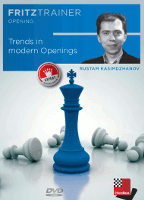
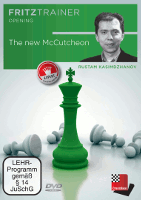
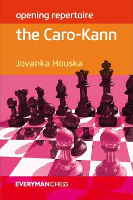

Leave a Reply